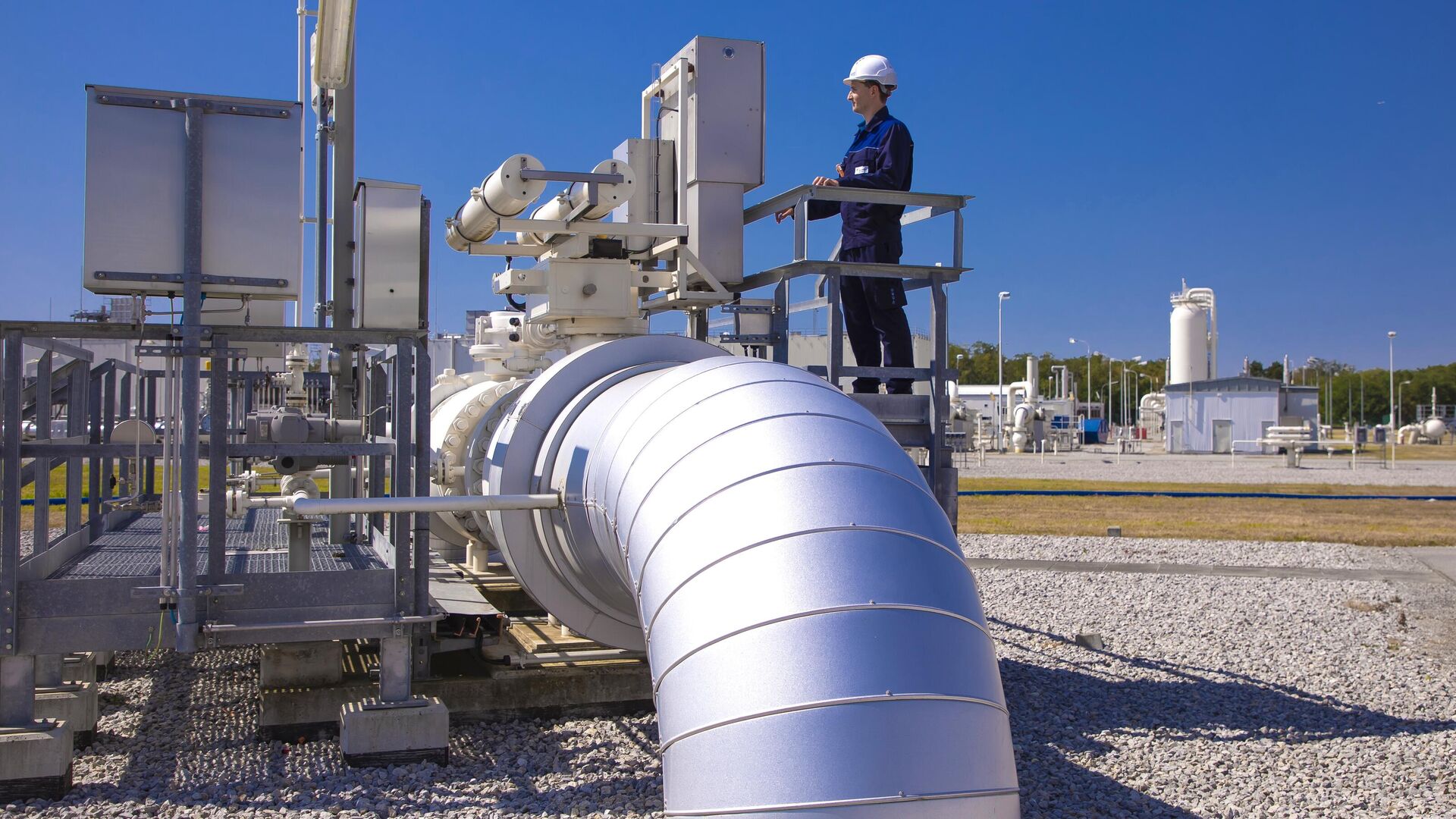https://sputnikglobe.com/20221002/average-gas-injection-into-eu-storage-facilities-drops-by-30-in-september-operator-1101428207.html
Average Gas Injection Into EU Storage Facilities Drops by 30% in September: Operator
Average Gas Injection Into EU Storage Facilities Drops by 30% in September: Operator
Sputnik International
MOSCOW (Sputnik) - Gas injection rate into the European underground gas storage facilities (UGS) has dropped by nearly 30% to 0.25 percentage points per day in... 02.10.2022, Sputnik International
2022-10-02T06:13+0000
2022-10-02T06:13+0000
2023-04-12T17:04+0000
energy crisis in europe
gas
reserves
european union (eu)
https://cdn1.img.sputnikglobe.com/img/07e6/09/06/1100442909_0:0:3207:1805_1920x0_80_0_0_36f6545d61f14bd3bbca1afc4452b72a.jpg
European UGS are filled by 87.83%, containing 95.3 billion cubic meters of gas, with the total capacity estimated at 110 billion cubic meters, an energy expert at Russian company Vygon Consulting, Ivan Timonin, told Sputnik on Sunday.The analyst also said that the current gas reserves would be enough to cover only 40% of the bloc's energy demand as the European Union usually consumes about 250 billion cubic meters of gas in autumn-winter period. At the same time, the European Commission said this summer that gas storage facilities account for 25-30% of all gas consumed in Europe in winter.In 2021, about 75 million tonnes of liquefied natural gas (LNG) were delivered to the European countries. The volume of LNG supply is expected to increase by 1.5 times to 120 million tonnes in 2022 given the current dynamics, Timonin added.The average rates of gas injection into the European UGS in May amounted to 0.45 percentage points, in June to 0.37 percentage points, in July to 0.36 percentage points, and in August to 0.37 percentage points.The heating season in Europe is due to start in mid-October, although last year it was pushed until November. At the same time, gas deliveries from Russia remain limited given that the Nord Stream 1 and Nord Stream 2 offshore pipelines in the Baltic Sea were damaged by explosions and rendered inoperative earlier this week. The Swedish and Danish authorities said they discovered gas leaks caused by undersea explosions, with the consensus being that the incident was a result of sabotage.Meanwhile, Ukraine keeps rejecting gas transit through the Sokhranevka entry point. Sudzha remains the only station pumping Russian gas to Europe via Ukraine.
Sputnik International
feedback@sputniknews.com
+74956456601
MIA „Rossiya Segodnya“
2022
Sputnik International
feedback@sputniknews.com
+74956456601
MIA „Rossiya Segodnya“
News
en_EN
Sputnik International
feedback@sputniknews.com
+74956456601
MIA „Rossiya Segodnya“
Sputnik International
feedback@sputniknews.com
+74956456601
MIA „Rossiya Segodnya“
gas, reserves, european union (eu)
gas, reserves, european union (eu)
Average Gas Injection Into EU Storage Facilities Drops by 30% in September: Operator
06:13 GMT 02.10.2022 (Updated: 17:04 GMT 12.04.2023) MOSCOW (Sputnik) - Gas injection rate into the European underground gas storage facilities (UGS) has dropped by nearly 30% to 0.25 percentage points per day in September, according to data from the Gas Infrastructure Europe (GIE) association.
European UGS are filled by 87.83%, containing 95.3 billion cubic meters of gas, with the total capacity estimated at 110 billion cubic meters, an energy expert at Russian company Vygon Consulting, Ivan Timonin, told Sputnik on Sunday.
The analyst also said that the current
gas reserves would be enough to cover only 40% of the bloc's energy demand as the European Union usually consumes about 250 billion cubic meters of gas in autumn-winter period. At the same time, the European Commission said this summer that gas storage facilities account for 25-30% of all gas consumed in Europe in winter.
In 2021, about 75 million tonnes of liquefied natural gas (LNG) were delivered to the European countries. The volume of LNG supply is expected to increase by 1.5 times to 120 million tonnes in 2022 given the current dynamics, Timonin added.
The average rates of gas injection into the European UGS in May amounted to 0.45 percentage points, in June to 0.37 percentage points, in July to 0.36 percentage points, and in August to 0.37 percentage points.
The heating season in Europe is due to start in mid-October, although last year it was pushed until November. At the same time, gas deliveries from Russia remain limited given that the Nord Stream 1 and Nord Stream 2 offshore pipelines in the Baltic Sea were damaged by explosions and rendered inoperative earlier this week. The Swedish and Danish authorities said they discovered gas leaks caused by undersea explosions, with the consensus being that the incident was a result of sabotage.
Meanwhile, Ukraine keeps rejecting gas transit through the Sokhranevka entry point. Sudzha remains the only station pumping Russian gas to Europe via Ukraine.


